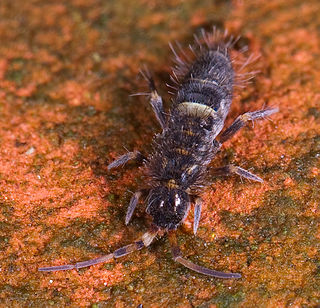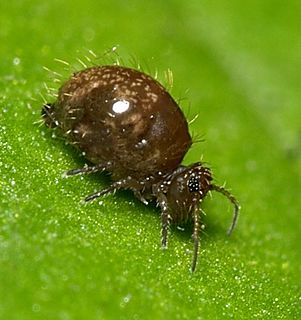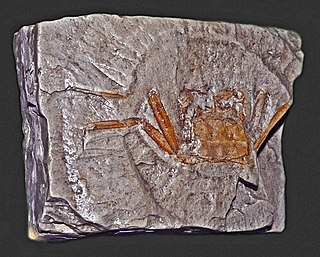 W
WAcastoidea is a superfamily of trilobites from the order Phacopida, suborder Phacopina. This superfamily is divided into two families, Acastidae and Calmoniidae. This superfamily is distinguishable from the Phacopidae in that eyes are closer to the glabella and that the glabella has lobes, unlike the genera in Phacopidae.
 W
WDalmanitoidea is a superfamily of trilobites in the order Phacopida, containing the three families Dalmanitidae, Diaphanometopidae and Prosopiscidae.
 W
WThe Entomobryoidea are a superfamily of springtails (Collembola), tiny hexapods related to insects. In the modern sense, this group is placed in an order called Entomobryomorpha.
 W
WThe order Symphypleona is one of the three main groups of springtails (Collembola), tiny hexapods related to insects. When the springtails were still believed to be an order of insects, the Symphypleona were ranked as a suborder.
 W
WThe family Oplophoridae is a taxon of pelagic shrimp and the only subtaxon of the superfamily Oplophoroidea. It contains the following genera:Acanthephyra A. Milne-Edwards, 1881 Ephyrina Smith, 1885 Heterogenys Chace, 1986 Hymenodora Sars, 1877 Janicella Chace, 1986 Kemphyra Chace, 1986 Meningodora Smith, 1882 Notostomus A. Milne-Edwards, 1881 † Odontochelion Garassino, 1994 Oplophorus H. Milne-Edwards, 1837 Systellaspis Bate, 1888 † Tonellocaris Garassino, 1998
 W
WOrithyia sinica, sometimes called the tiger crab or tiger face crab, is a "singularly unusual" species of crab, whose characteristics warrant its separation into a separate genus, family and even superfamily, having previously been included in the Dorippoidea or Leucosioidea. Its larvae, for instance, are unlike those of any other crab.
 W
WParasquillidae is a family of mantis shrimp containing the three genera Faughnia, Parasquilla and Pseudosquillopsis. It was previously included in the superfamily Gonodactyloidea, but that group was found to be paraphyletic, and a new superfamily, Parasquilloidea was erected.
 W
WPhacopoidea is a superfamily of trilobites.
 W
WPtychoparioidea is a superfamily of the Ptychopariida order of trilobites.
 W
WRetroplumidae is a family of heterotrematan crabs, placed in their own (monotypic) superfamily, Retroplumoidea.
 W
WThe Rhenopteridae are a family of eurypterids, an extinct group of chelicerate arthropods commonly known as "sea scorpions". The family is the only family currently contained in the superfamily Rhenopteroidea, one of four superfamilies classified as part of the suborder Stylonurina.
 W
WThe order Symphypleona is one of the three main groups of springtails (Collembola), tiny hexapods related to insects. When the springtails were still believed to be an order of insects, the Symphypleona were ranked as a suborder.
 W
WThe order Symphypleona is one of the three main groups of springtails (Collembola), tiny hexapods related to insects. When the springtails were still believed to be an order of insects, the Symphypleona were ranked as a suborder.
 W
WStylonuroidea is an extinct superfamily of eurypterids, an extinct group of chelicerate arthropods commonly known as "sea scorpions". It is one of four superfamilies classified as part of the suborder Stylonurina.
 W
WThalassina is a genus of mud lobsters found in the mangrove swamps of the Indian Ocean and western Pacific Ocean. Its nocturnal burrowing is important for the recycling of nutrients in the mangrove ecosystem, although it is sometimes considered a pest of fish and prawn farms.
 W
WXyloiuloidea is an extinct superfamily of millipedes that existed from the Lower Devonian through the Upper Pennsylvanian period in Europe and North America.